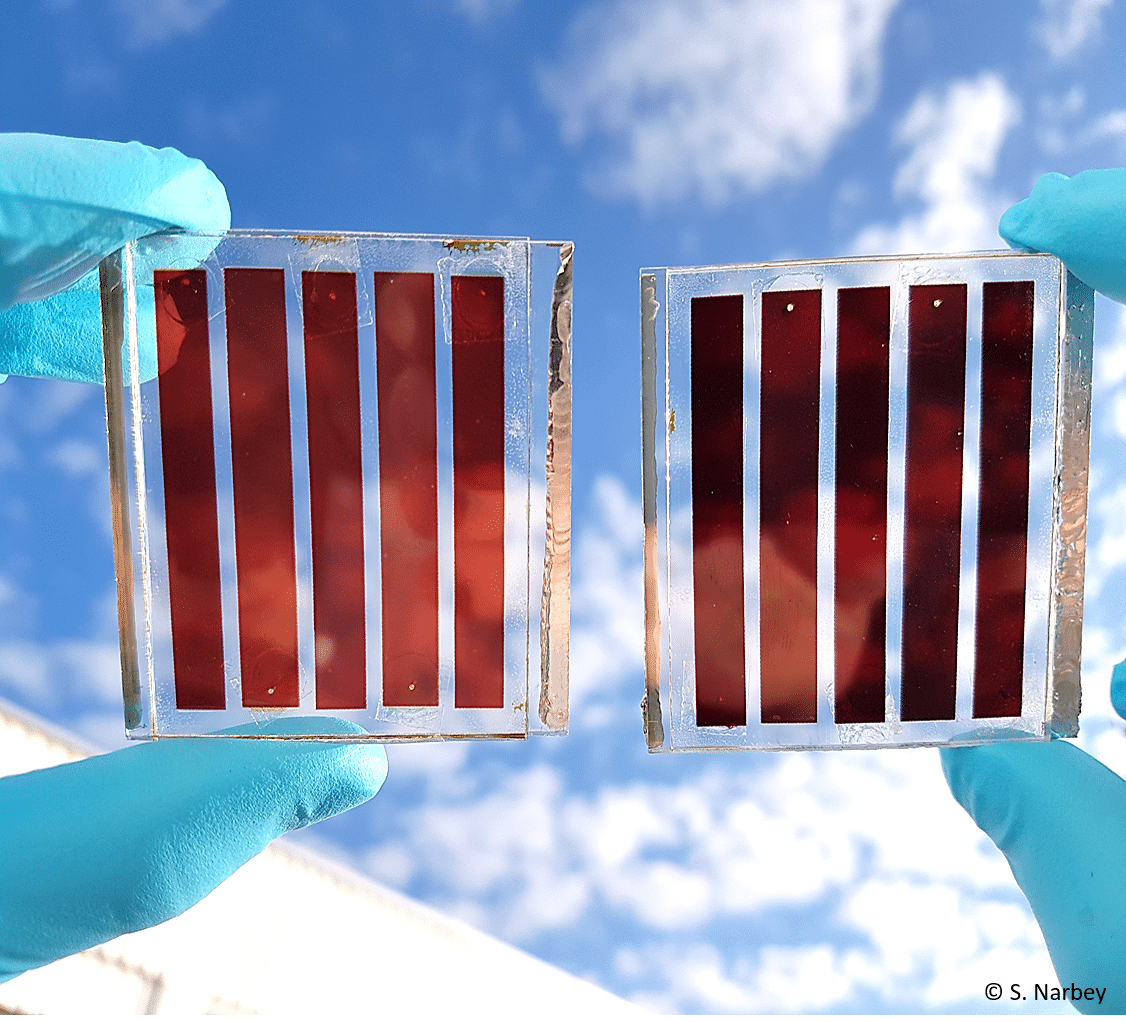Scientists in France have built a semi-transparent dye-sensitized mini solar panel with an active area of 14 cm2 based on benzothiadiazole-based photosensitizers.
The research team, led by France's Molecular Systems and Nanomaterials for Energy and Health Laboratory (SyMMES) and the French Alternative Energies and Atomic Energy Commission (CEA), developed four different variants of a dye call RK1 that contains the benzothiadiazole-based molecule YKP-88. “This dye showed an efficiency of over 9% in dye-sensitized solar cells fabricated with classical architectures, and up to 10.3% with inverse opals-based electrodes,” the scientists specified.
The properties of the four dyes were studied by ultraviolet-visible spectroscopy, cyclic voltammetry, and then compared to density-functional theory (DFT) calculations. They were then tested in the solar cells using opaque titanium dioxide (TiO2) electrodes and various electrolytes. “The combination of YKP-88 with one of the new dyes, following a co-sensitization approach, led to a PCE of up to 10.9% using an iodine-based electrolyte,” the French group stated, adding that, by using an ionic liquid-based electrolyte, the solar cell was able that retain 80% of its initial efficiency for over 7000 hours.
With this cell, the academics were able to produce, with the support of Swiss technology company Solaronix, a 122.9 mW semi-transparent mini-module with an active surface of 14.08 cm2, a total surface of 23 cm2, and a reported conversion efficiency of 8.73%. The module, which is based on five rectangular-shaped cells that are interconnected in series, also showed a short circuit current of 58.1 mA, an open-circuit voltage of 3.63 V, and a fill factor of 58.26%.
Popular content
“The YKP-88 mini-module shows an aesthetic burgundy red tint and possesses an average visible transmittance (AVT) of 26% measured between 380 nm and 740 nm,” the scientists added. “This work highlights the potential of this new generation of organic dyes for future applications in semi-transparent solar cells.”
The mini-panel is described in the paper Benzothiadiazole-based photosensitizers for efficient and stable dye-sensitized solar cells and 8.7% efficiency semi-transparent mini-modules, published in the Royal Society of Chemistry.
This content is protected by copyright and may not be reused. If you want to cooperate with us and would like to reuse some of our content, please contact: editors@pv-magazine.com.



By submitting this form you agree to pv magazine using your data for the purposes of publishing your comment.
Your personal data will only be disclosed or otherwise transmitted to third parties for the purposes of spam filtering or if this is necessary for technical maintenance of the website. Any other transfer to third parties will not take place unless this is justified on the basis of applicable data protection regulations or if pv magazine is legally obliged to do so.
You may revoke this consent at any time with effect for the future, in which case your personal data will be deleted immediately. Otherwise, your data will be deleted if pv magazine has processed your request or the purpose of data storage is fulfilled.
Further information on data privacy can be found in our Data Protection Policy.